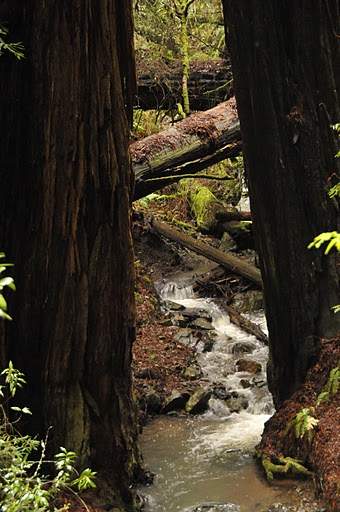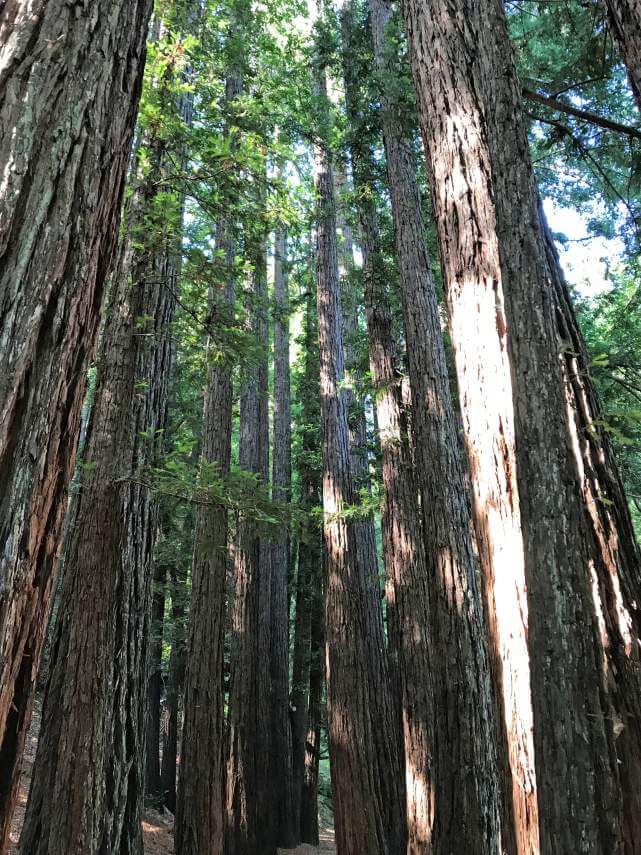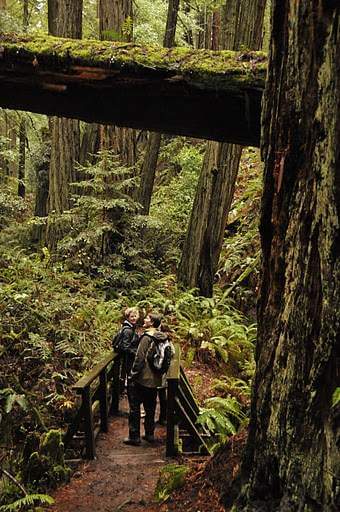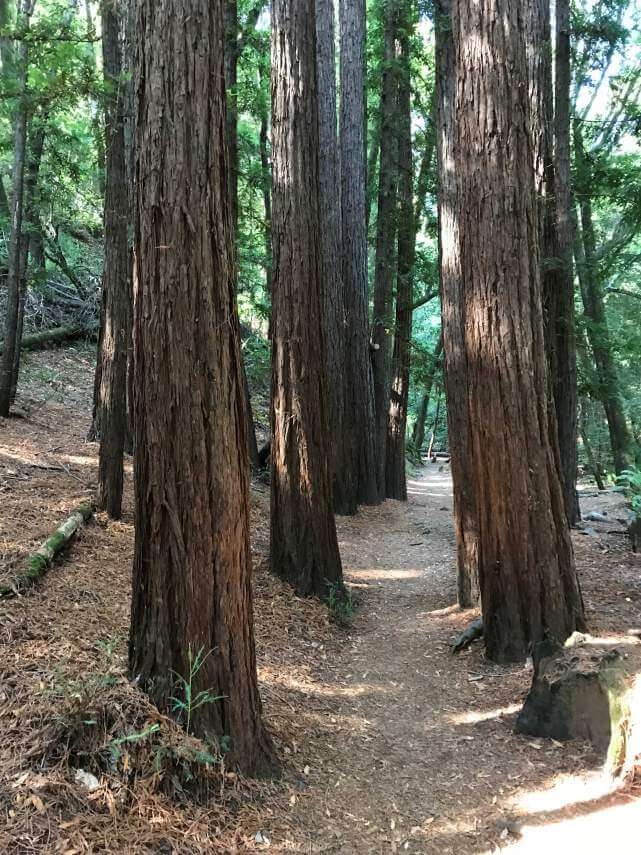The coastal canyons on Mount Tamalpais are home to verdant redwood forests. The mild Mediterranean climate and the summer fog in Marin County are ideal for these majestic trees. Many homeowners live with and protect their redwood trees, the remnants of ancient forests.
A Little History of California Redwoods
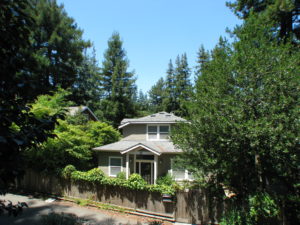
The coastal redwood, Sequoia semperviens, grows well from south of Monterey to Southern Oregon. The growing zone extends from the coast 5 to 35 miles inland. Most of the redwoods were harvested for lumber between 1880 and 1910, with only 5% of the original, old growth trees preserved in parks. Logging began in Mill Valley and Corte Madera about 1840-50, giving these towns their names: Mill Valley for the lumber saw mill located in the present Old Mill Park on Throckmorton Ave and Corte Madera, Spanish for “cut wood.”
For more information about redwoods, go to this excellent site maintained by the University of Wisconsin at La Crosse!
Growth of Redwoods
Redwoods are among the fastest growing trees, reaching 100 feet in 50 years. A mature tree adds 1/16 to 1/8 inch of radial growth per year. The largest known redwoods have grown to about 370 feet and 22 feet in diameter. They can live for 1,500 to 2,200 years.
Most of the redwoods that you will see in Marin are second growth. These have grown from the stumps of the original trees cut for lumber. The new trees are often clustered around the stumps of the original tree in groups of two to six trunks. These trees have grown rapidly over the last hundred years as they were growing on the extensive roots of the parent tree. Redwoods are resistant to rot, so you will often see the remains of a parent tree enclosed by a ring of second growth trees.
Loggers frequently burned the stumps of the original trees to clear the land for other uses, often cattle grazing. You can still see the burned areas. However, redwoods are fire-resistant and many trees succeeded to regrow. The roots of a redwood extend in a diffuse net far from the tree and close to the surface for efficient water collection. The extent of root growth is five times or more the diameter of the tree trunk.
Coastal fog is important for the growth of redwoods. The moisture in the fog prevents loss of water from the leaves (needles) in the warmer months, and the fog condensing on the upper leaves drops to the ground and supplies the extensive roots just below the surface. The best places for tree growth are along the streams descending from Mount Tamalpais that also have summer fog cover.
Coastal redwoods are related to but different from the giant Sequoias in the Sierra Nevada Mountains and the lovely Dawn redwoods originating in China.
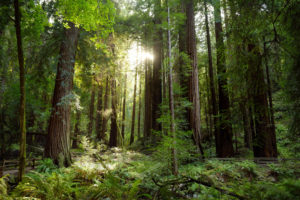
Redwoods in Muir Woods National Monument, Marin County
Care of Redwoods
We recently met with a consulting arborist, Ray Moritz from Urban Forestry Associates, who provided valuable information about living with redwood trees:
- Roots will grow under a foundation. If they meet a foundation, they may grow along the surface putting pressure on the cement. This may cause damage if the foundation is thin or shallow.
- When the trunk grows into a barrier (like a deck or fence), the barrier compresses the vascular system on the tree and causes damage. Best to remove the barrier. The tree will eventually increase growth for protection in the area of contact. Can grow around structures like fence posts.
- Redwoods are the most wind-stable of trees. Also, earth movements (i.e. earthquakes) have no effect.
- An acceptable level of pruning is up to 25% of foliage in any year. You can raise the canopy of a tree without affecting its health.
- Where roots are raising the ground level and interfering with surface structures, like paths, you can shave back the roots without affecting the tree.
- During drought years provide supplemental water to keep trees healthy and to avoid top die back. During drought years provide about 6 hours of soaking with a soaker hose every three weeks until we get two inches of rain and the wet season starts.
- In August and September, old leaves turn brown and fall. The leaf litter is useful to prevent evaporation from the root areas.
Regulation of Redwoods
Removal of native, “protected” or “heritage” trees, including redwoods, is regulated by each town and by the county. The definition of a heritage or protected tree may be different for each town. You can start by looking up local regulations on the Internet, but specific terms and procedures change frequently.
You must check with your town or the county planning department before removing trees. Removing a tree without a permit can result in a large fine–up to many thousands of dollars. Don’t plan to remove a tree quietly without anyone noticing. Your neighbors may be watching and may file a complaint with the authorities.
Redwood Parks in Marin
Here are a few parks in Marin that feature old growth and second growth redwoods:
- Muir Woods National Monument south of Mill Valley has many old growth redwoods. Reservations are necessary for this park.
- Roy’s Redwoods on Nicasio Road in north San Rafael has 293 acres of second growth redwoods.
- Samuel P. Taylor State Park in Woodacre preserves second growth redwoods along the Lagunitas Creek.



